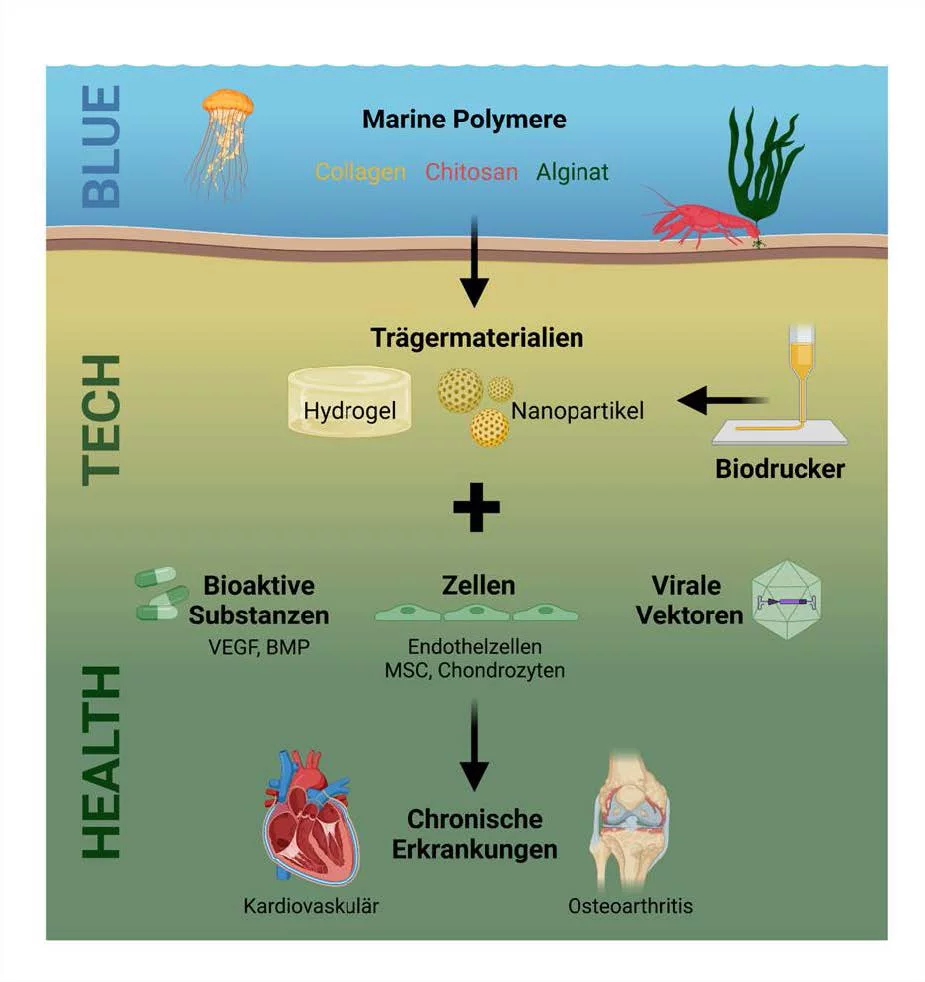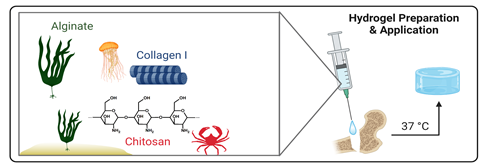Chronic diseases can damage various tissues of the body. To deliver a therapeutic agent to the right place in the body, carrier materials are needed. Marine biopolymers serve as building blocks for such medical carrier materials, ensuring that therapies work where they are supposed to work: in the cardiovascular system or to treat inflammation or bone and cartilage defects.
Treat defective bones and aneurysms in the right place
In the "BlueBioPol" project, researchers are now developing carrier materials for individual transport systems that bring the active substance, the cell, or the gene vector to the site of action. In this way, tissue defects can be treated in a targeted and localized manner. The German Federal Ministry of Education and Research (BMBF) funds the project with around 800,000 euros.
The University Medical Center Schleswig-Holstein (UKSH) is one of the project partners in medicine, pharmacy, materials science, and marine biotechnology. The biomedical application of the new carrier materials is being investigated in two working groups at UKSH: One of them is headed by Professor Oliver Müller. He is Principal Investigator at the DZHK. In the "Translational Cardiology and Angiology" working group, he and his team are developing transport systems to deliver therapeutic gene transfer vectors for treating circulatory disorders and aneurysms into muscle tissue and the vessel wall, respectively. The two groups also plan to investigate how hydrogels can be used to produce implants in 3D (bio)printers.
Hydrogels made from marine biopolymers resemble human tissue
Developing the bioactive carrier materials is now the task of the project partners: Hydrogels are particularly suitable because they resemble the basic substance of human tissue. Such biopolymer-based hydrogels are produced from algae or jellyfish, for example. Derivatives of chitin, which is found, for instance, as a scaffolding material in the shell of crustaceans, are also very suitable as building blocks for carrier materials. Both their shape and their properties can be flexibly adapted to different tissue defects. To achieve this, materials science researchers combine them with nanomaterials.
Hydrogels that respond to light, temperature, or electrical signals can be better controlled
"By introducing specific, functional nanomaterials into the hydrogels, they acquire new functions. For example, they can become responsive and react to external stimuli such as light, temperature, or electrical signals," explains subproject leader Dr. Fabian Schütt from the "Functional Nanomaterials" working group. This allows them to be controlled, for example to release transported active ingredients in a controlled manner.
Source: Pressemitteilung der Christian-Albrechts-Universität zu Kiel



